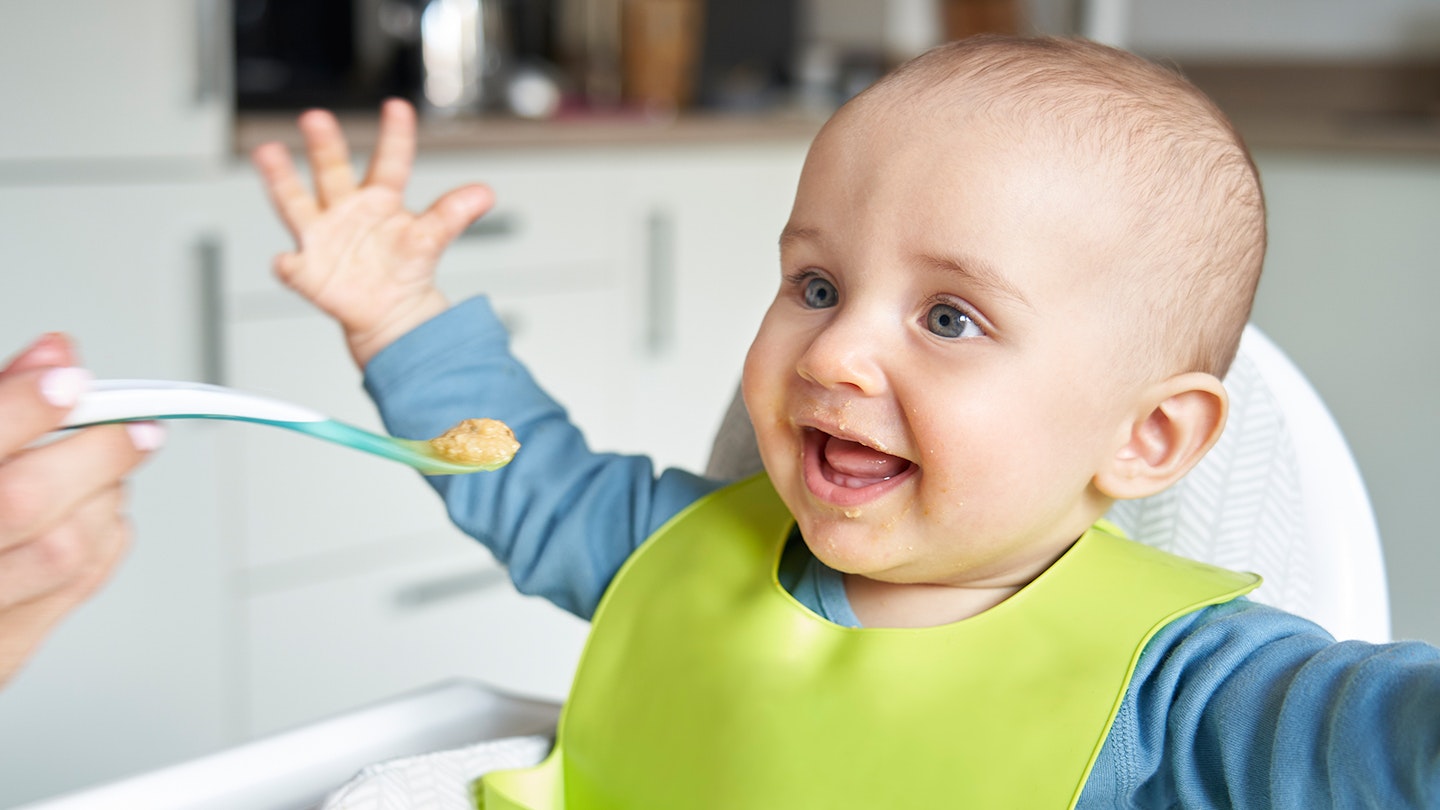There comes a point in every baby’s life, usually when they’re approaching six months old, when milk just doesn’t quite cut it anymore and both you and your baby are ready to start the introduction of solid foods, known as "baby weaning".
Weaning is a huge learning curve for you and your baby, and it can be hard to get to grips with. From knowing when to stop breastfeeding to finding the best high chair and considering whether or not to try baby-led weaning, there's plenty to think and learn about. That’s why we’ve put together this fast-track guide on when to wean, how to wean, the best veg-led weaning ideas and baby puree combinations as well as how much to feed your tot.
What is weaning?
The term weaning refers to the process of introducing your baby to solid foods alongside their usual breast milk or formula. "Weaning is a really exciting journey," says nutritionist Charlotte Stirling-Reed. "You get to introduce your baby to one of life’s real pleasures!"
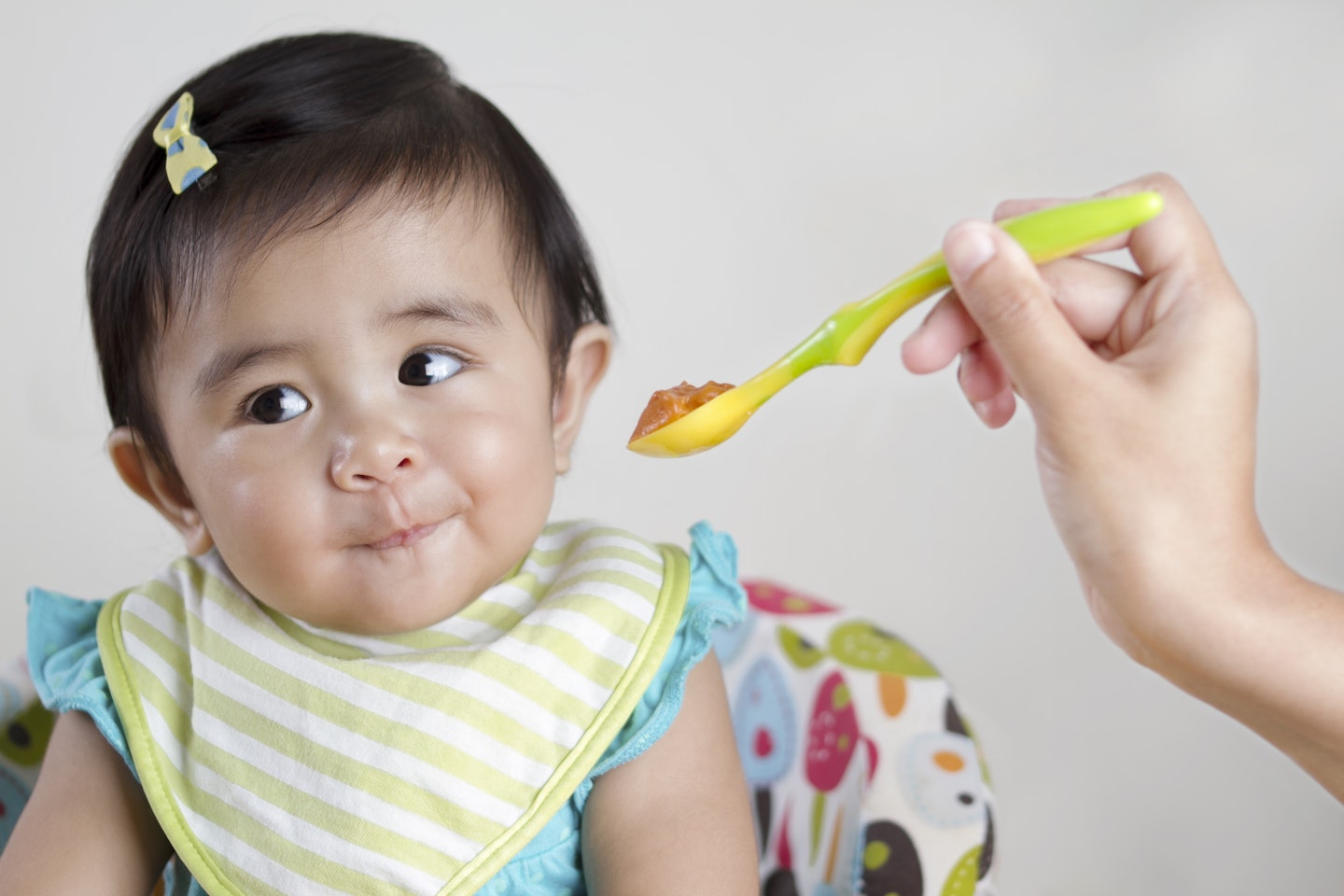
When to wean baby
"The NHS advice is that around six months old is the besttime to wean your baby," says Charlotte. "The reason that they use the word 'around' is because all babies are different, so some babies might be ready slightly earlier".
It’s not always easy to work out when your baby is ready to move beyond milk into the wonderful world of food. "Sometimes you get young babies who seem absolutely fascinated by food – they stare at your plate, they watch you eating, they try to grab your lunch," says Charlotte. "This doesn’t mean they’re gearing up to tuck into a three-course roast dinner. It’s far more likely to reflect the fact that your baby finds you, and everything you do, amazing."
In other words, your baby isn’t gawping at your chips because they're fed up with milk – they're just intrigued by those funny yellow sticks you’re putting into your mouth. You might also notice your little one reaching out to grab objects to bring towards their mouths too. This is how they start to explore the world at this stage, so be careful with play food toys. If food fascination isn’t necessarily a sign that a baby’s ready to wean, what is?
How do I know my baby is ready for solid food?
"A number of developmental steps come together when your baby is ready for food," says Charlotte.
These are:
• Your baby is getting towards six months of age.
• Your baby is able to hold their head and neck up steadily, so they can swallow safely.
• Has some hand-eye coordination, so will be able to see food, pick it up and get it into their mouth. (Although even the most coordinated baby will get food everywhere in the early days of weaning!)
Tip: Don’t start weaning before your baby is at least four months old (17 weeks+). Their digestive systems just won’t be ready for it. If you notice they're sticking their tongue out when eating solids, it might mean they're not quite ready yet. It might be worth giving it a week and then trying again.
Once you’ve decided to start weaning and you've picked an appropriate high chair, choose a time when you and your baby are both relaxed and happy, when there are no illnesses or colds that might put her off trying anything new. "The other thing to think about - in terms of timing for that first taste – is making sure your baby isn’t really hungry, as then it could make them upset, and isn’t totally full of milk, which could mean they won’t want to eat," says Charlotte. "A good time is an hour after the first milk feed of the day."
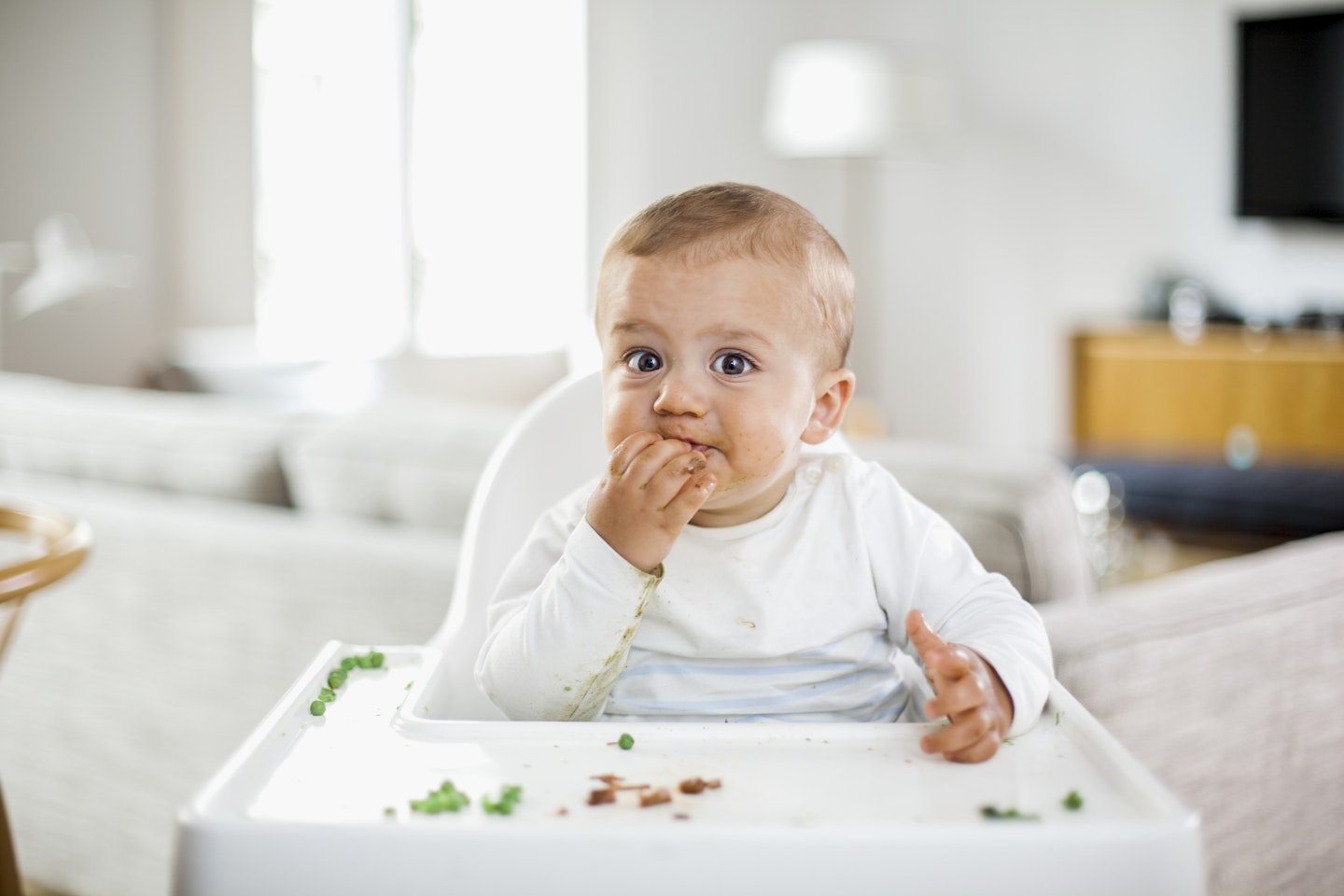
How to wean a baby
There are a variety of ways to start weaning – spoon-feeding, where you create purées to offer your baby on a soft, silicone spoon; baby-led, where you offer your baby soft food to pick up and gum by themselves; or a combination of these approaches.
"The right way to do it is the one that makes you feel most happy and relaxed about feeding because that helps your baby to feel happy and relaxed about food," says Charlotte. "Just remember that babies should ideally be aged six months plus before you offer finger foods."
Spoon-fed weaning: "Spoon-feeding tends to be less messy than baby-led weaning because you have control of the spoon (initially)!" says Charlotte. "In the early weeks, it also means you have a better idea of just how much your baby is eating." But spoon-feeding involves spending more time in the kitchen than baby-led weaning because you’ve got to cook food and then also purée it.
"Also think about your baby’s temperament," says Charlotte. If you have an easy-going baby who goes with the flow, they’ll probably slot into spoon-feeding without a fuss. If you have a determined tot who likes doing things their way, they might want to be the one holding the spoon. "If this happens, try using two spoons at meal times – one pre-loaded for baby and one for them to hold," says Charlotte.
Baby-led weaning: "One key benefit of baby-led weaning is that your baby gets to play with their food," says Charlotte. "They might not eat much of it, but it gives them the chance to get used to the way different foods look, smell and feel. That builds familiarity with the food, which ultimately encourages babies to eat. You don’t have to cook special meals for your baby – you can just give them soft food from your plate (so soft that you can flatten it by squeezing it between your finger and thumb). And as your baby is dealing with texture from the start, they’ll hopefully be less fussy about lumps in the food." Great baby-led weaning food options includes banana, steamed broccoli floret, toast soldiers and slices of cheese.
Baby-led-weaning does get messy so expect food on the floor (and the walls, and possibly the ceiling). That means it won’t always be easy to tell how much food your baby has eaten rather than smeared around the plate. There’s a high chance that your baby will have moments when they gag on the food – this is completely normal, it is a reflex action when a lump in food travels into your baby’s throat, and the gag reflex is actually there to prevent choking. They will probably spit out the lump and may also vomit a little, but try to stay calm so food doesn’t become a source of worry for your baby.
Don't forget that your baby should only be having small pieces of cut-up food. Not only will this make it easier for them to pick up and grasp but it will prevent choking. Check out this handy guide from Charlotte below:
What foods should I start weaning with?
Babies are born with a preference for sweet tastes, but it can take them longer to like umami/savoury, bitter or sour flavours. "In the first two weeks of weaning, I suggest that you feed your baby a helping of one vegetable a day, either cooked until it’s soft, or puréed," says Charlotte. "Initially go for some veg with a slightly bitter taste, such as cauliflower, broccoli, courgette, aubergine or spinach, rather than the sweeter veg such as carrots, parsnips or peas." The good news is that in these early days when your baby is just starting out on their food journey, they're much more amenable to giving things a go than they might be when they're a few months older.
"Starting off on vegetable led weaning gives them an experience of the more bitter flavours from the start," says Charlotte. "So, you’re already building up their palate. Once you’ve done this veg intro for around 10-14 days, you can start adding in different flavours. Again, avoid the sweet flavours for now and introduce them to savoury tastes like well-mashed butter beans, flakes of white fish, strips of chicken, mashed pasta and eggs. Once your baby has experienced a range of flavours, you can introduce the sweeter flavours. Don’t give up on foods that your baby is less keen on – every so often, offer them a taste of them again. At some point, they may decide they’re really tasty!"
Baby weaning foods to avoid
There are some foods to avoid that babies shouldn’t eat, such as avoiding honey until baby is one, salty foods and certain soft cheeses.
Keep drinking
As soon as your baby starts weaning, your baby can have water in an open cup (no spout or lid) to have with their meal. Once they're six months, this can be water straight from the tap. "At first, the water is going to go everywhere," says Charlotte "because your baby has to learn how to manipulate the cup to their lips and how to sip from it. Until they've mastered those steps, only put about an inch of water in the cup. You’ll still have to mop up – but you’ll be mopping up a small puddle, rather than a lake!"
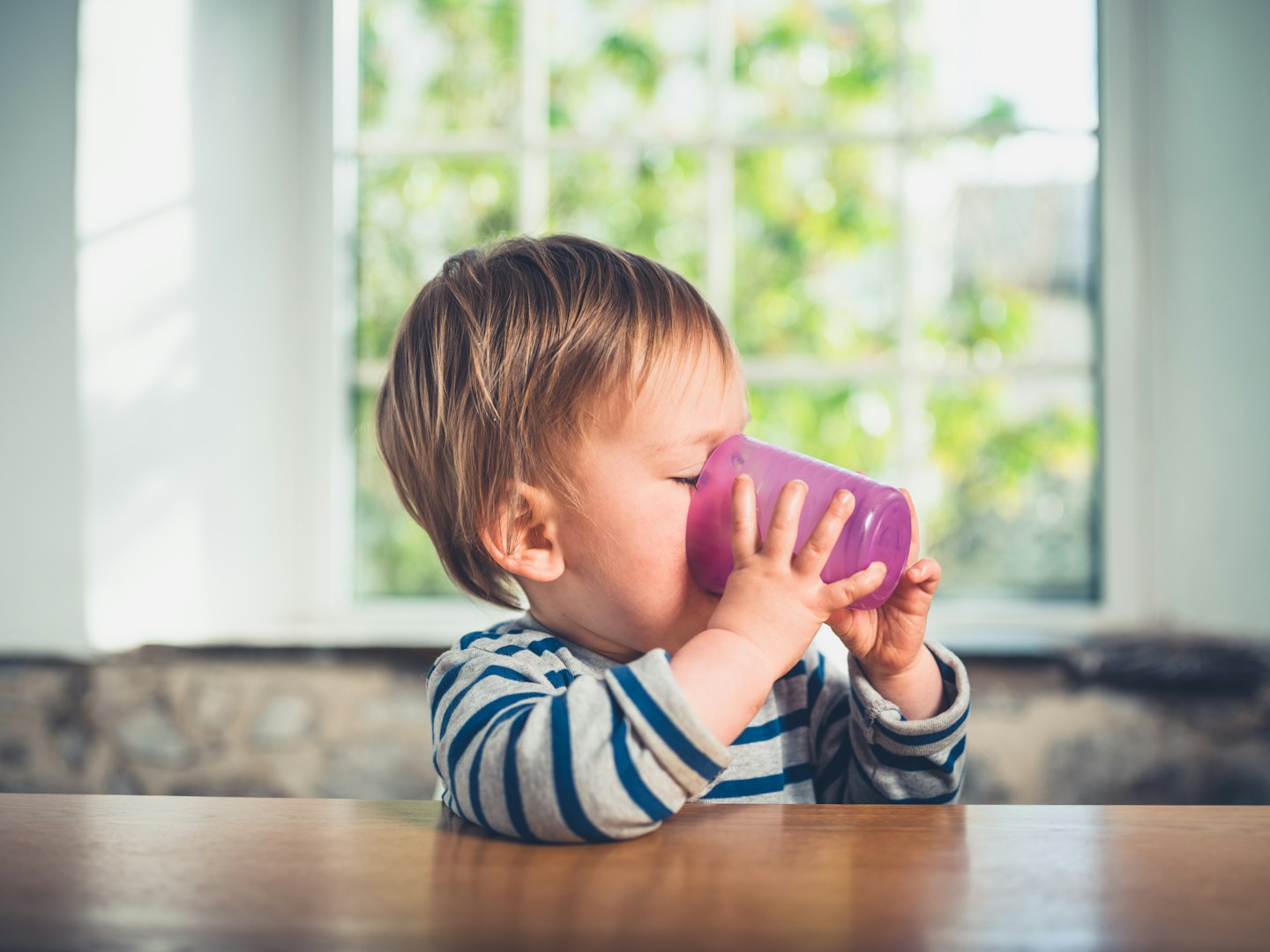
When to feed your baby
In the first weeks of weaning, babies are just getting used to the concept of exploring new tastes. "Spend the first one to two weeks of weaning offering your youngster one food, once a day," says Charlotte. They may only have a teaspoon-full of cauliflower purée, or one floret, or they may have a few teaspoons or florets, depending on their appetite and how they feel about the flavour.
"At this stage, your baby might get no more than a taste of food, which is fine. Around week two or three, start offering a 'meal-time', twice a day." You can start combining foods at this point too: maybe a piece of soft avocado with a small finger of toast or baby-friendly ratatouille. "Then, at the start of week five – when your baby’s been weaning for around a month, introduce a third mealtime of combined flavours," says Charlotte. By the time your baby is around seven months old, their daily feeding timetable could look something like this:
• 7am: Milk
• 8.15am: Breakfast
• 10am: Milk
• 11.30pm: Lunch
• 2pm: Milk
• 4.30pm: Dinner
• 6.30pm: Milk
How much food should I give my baby?
That’s when you might feed your baby. But how much food should you be offering? "There is no set amount of food that your baby should be eating," says Charlotte. "Their appetite – just like the rest of them – is unique. Some babies have tiny appetites; others eat loads. The most important thing is to be responsive to your baby’s signals and to let them choose how much they want to eat and what – of the food you’re offering - they want to eat".
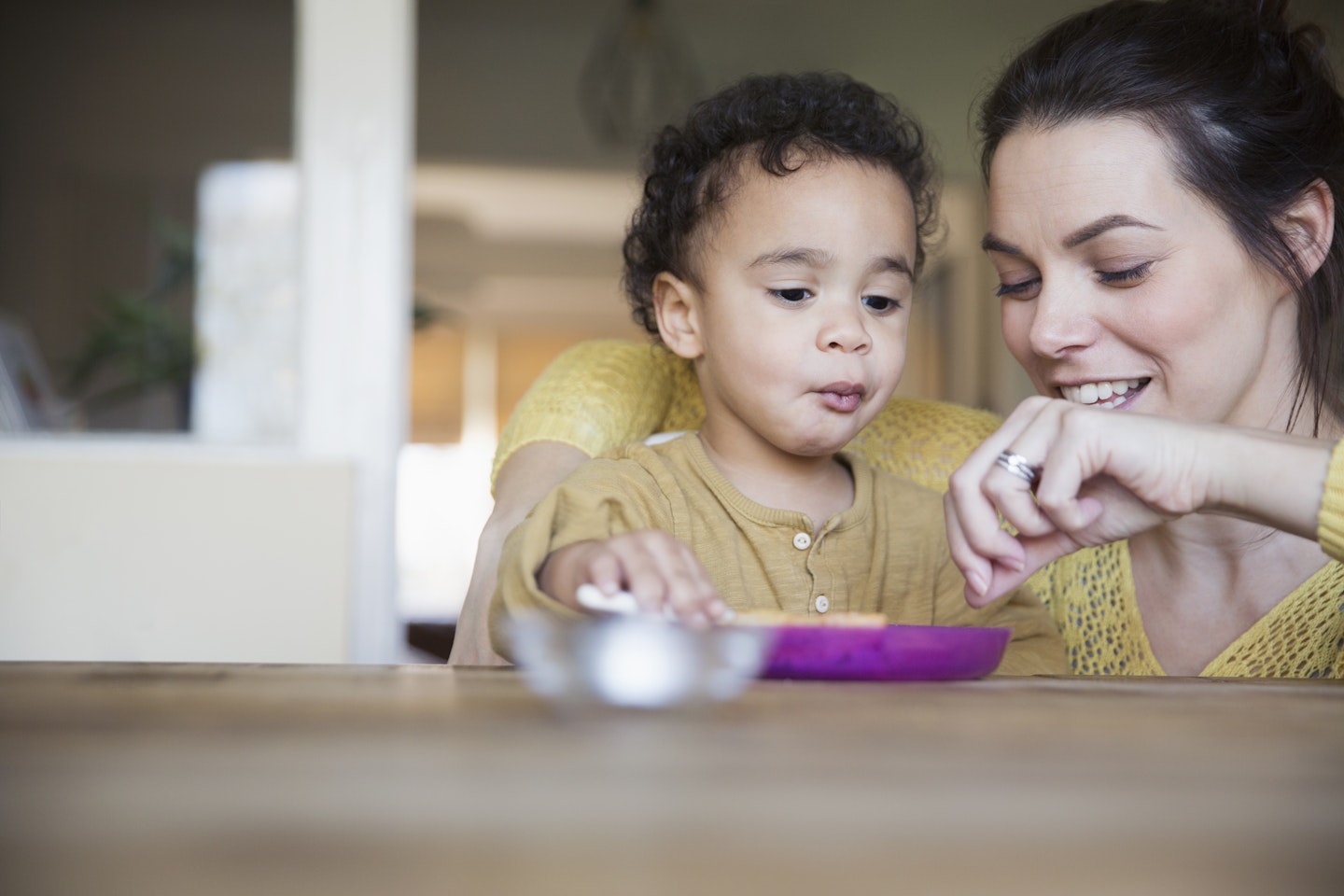
Top tips for weaning:
• Pay attention to what’s normal for your baby. Are they a fan of food or do they graze?
• Watch for the signs that they've had enough. Common ways of showing this are becoming upset; turning the head away; clamping the mouth shut.
• Get your baby weighed regularly to check that they're maintaining a healthy weight for their height/age.
• Keep an eye on their nappies. If they've got their normal amount of wet and dirty nappies (at least six in 24 hours), they're eating enough.
• Watch their energy levels. If they've got the same amount of energy as normal, they're eating enough food.
• Think about what they're eating over the course of a week, rather than over the course of a day. Babies’ appetites can fluctuate from meal to meal, so don’t micromanage their food!
• Whether they're breastfeeding or bottle-feeding, think about how much milk they're drinking. As your baby’s food intake increases, their milk consumption should naturally reduce. ‘By 10 months, when a baby is on a good three meals a day, I’d expect their milk intake to have gone down from about 600 ml a day to about 400ml a day,’ says Charlotte. ‘If they're still drinking lots of milk and being picky about food, it could simply be that the milk is filling them up, so try to re-balance the milk/ food ratio.’
• If they're a gobbler, try to slow their eating down. "Start with a small portion of food and only give them more when they've finished that portion and indicating that they want more," says Charlotte. "Offer a variety of textures, as that naturally slows eating down. Let them feed themselves, rather than you feeding them. And 'chat' during the meal! That communication is a good way to slow things down, too."
• Invest in some books on weaning to help you along your journey.
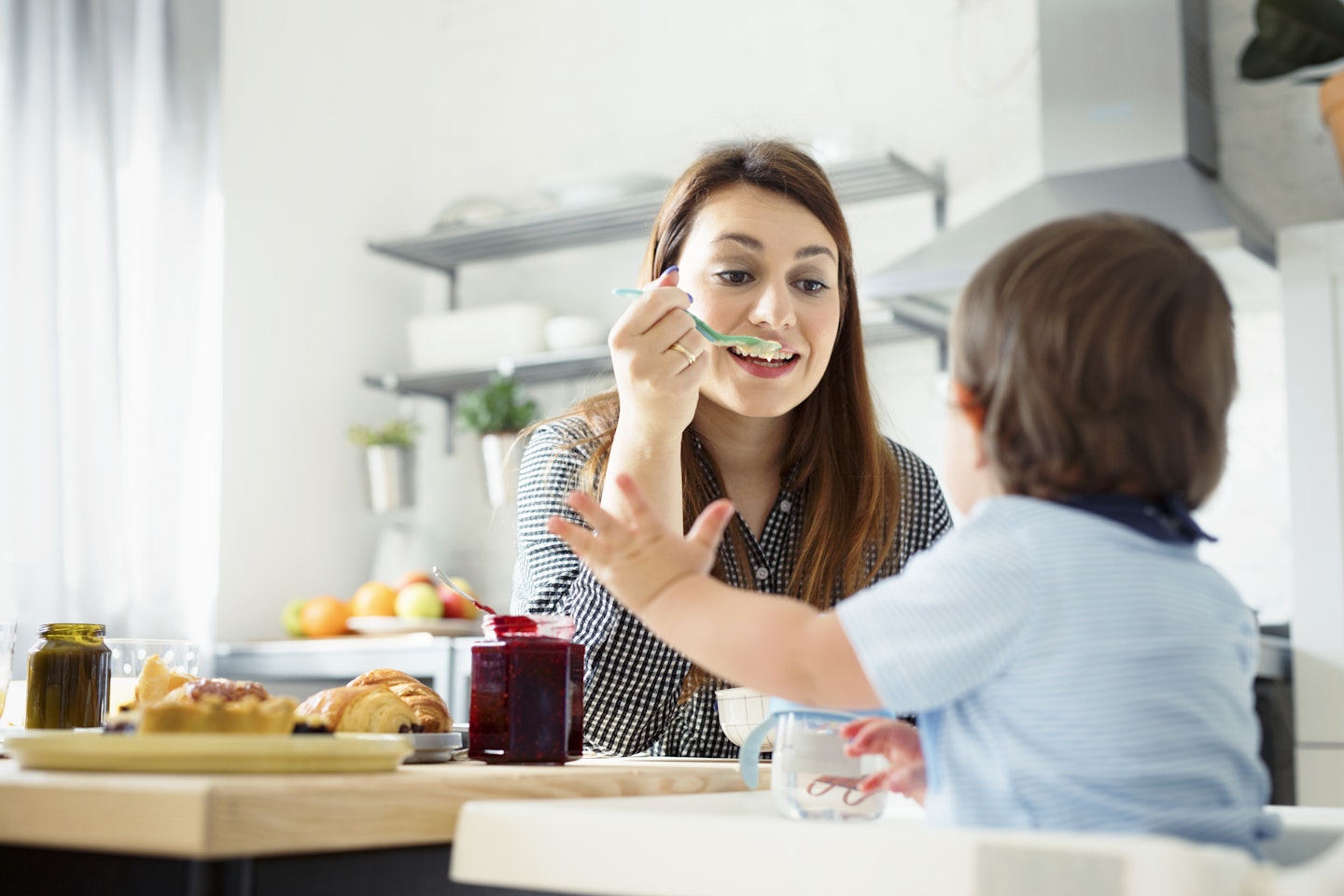
Weaning FAQs
My baby’s six months old, but they're showing no interest in food. What should I do?
"Don’t worry – if your baby’s only six months then it’s really early weaning days,’ says Charlotte. "The key thing is to make mealtimes really fun. Sit with your baby, lots of smiles and no pressure. Just give them a little bit of food and let them explore it – whether they poke it, throw it or smear it in their hair! Babies are comfortable with things they’re familiar with, so kick back and enjoy the journey of letting them get to know food. Some will go in their mouth, and gradually they'll get a taste for it!" What you serve the food on can also change baby's approach to food. We love serving little meals on bamboo baby plates – not only are they sustainable, but they're also hardwearing.
Do I need to sterilise weaning equipment before feeding baby?
Once your baby has reached six months of age, there’s no need to sterilise the likes of bowls, plates and spoons as it’s only the milk bacteria that causes problems, so just clean thoroughly in hot water. All bottle-feeding equipment should continue to be sterilised until 12 months.
Help! I need to wean, but I’m terrified of my baby choking.
"This is a big fear for parents," says Charlotte, "but there are two really helpful things you can do. The first is to go on a baby first aid course so that you’d know how to save a choking baby. The second is to understand the difference between gagging and choking". Gagging is a noisy way of moving food from the back of the throat to the front. Choking is when food gets stuck in the throat and it’s silent.
What snacks should I give my baby?
"Babies under 12 months don’t need snacks because milk is still their go-to extra," says Charlotte. "But if you’re out and about and need to give them something, try some fruit and vegetable sticks or a sugar-free, homemade oatcake."
Why does my baby keep spitting out their food?
"Babies often go through a phase of spitting out their food," says Charlotte. "That can happen in the stage when he's learning how to move food around in their mouth – some of it comes out because he hasn’t got the hang of it yet. It can also be a behavioural thing – he spits out food and it gets a reaction from you, so he tries it again to get more attention. The best thing you can do is to not draw attention to the spitting out and to eat with your baby, so he sees how mealtime should be done!"
Should I start weaning with baby rice?
Baby riceoffers a gentle introduction to solid foods and a smooth texture which many babies find easy to digest. Baby rice tends to be the starting point for parents before they move onto fruit and veg purees, so you may find that after a couple of days using baby rice, you'll feel comfortable moving on from it.
Should I be giving my baby supplements?
"Yes," says Charlotte. "Here’s what your baby needs:"
If you’re breastfeeding your baby, give them a daily vitamin D supplement from birth, regardless of whether you’re taking vitamin D yourself, or not. Babies who are exclusively having formula milk don’t need this vitamin D supplement until they’re having less than 500ml of formula a day. That’s because infant formula is already fortified with vitamins.
If you’re mixed feeding (some breast milk and some formula), you need to think about how much formula milk your baby is having. If they have less than 500ml a day, they need a daily vitamin D supplement. If they have 500ml a day or more, they don't. Once your baby is six months old, they need a daily vitamin supplement containing vitamins A, C and D, unless they are still drinking 500ml or more of formula every day. Only start giving them a vitamin supplement when they are drinking less than 500ml of formula a day. Even if your baby is taking all their supplements, you can also add some weaning superfoods into their diet too. Talk to your pharmacist about which supplement is best for your baby.
Meet the Expert: Charlotte Stirling-Reed is a registered nutritionist who specialises in maternal, infant and toddler nutrition, and a mum of two, srnutrition.co.uk
Emily Gilbert is the Features & Reviews Editor for Mother&Baby and has written for the website and previously the magazine since 2015. First-time mum to Theodore, Emily writes about everything from the top baby products to pregnancy, fertility and maternal mental health. Specialising in product reviews, Emily is the first to know about all the exciting new releases in the parenting industry.
